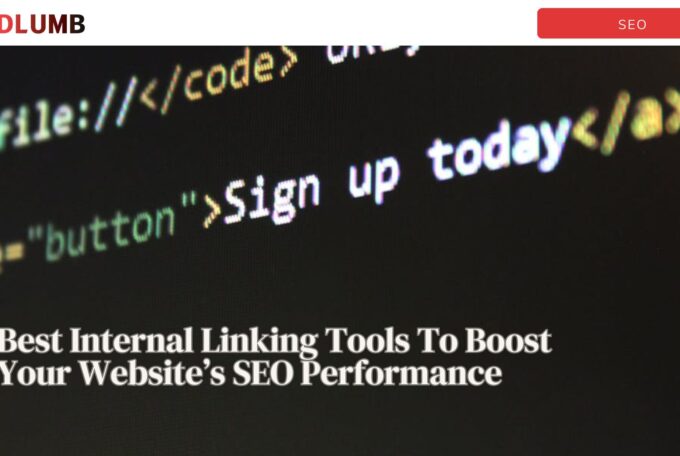A website’s success depends on its Google visibility. Research indicates that 93% of online experiences start with a search engine. Many website owners face challenges when making their sites appear on Google. That is why understanding proper search engine optimization techniques is significant for businesses regardless of size.
[su_list class=”story-highlight”]Key Takeaways
- With 93% of online experiences beginning on search engines, SEO is essential for businesses to improve their online presence and reach.
- A clear site structure, XML sitemaps, and an optimized robots.txt file effectively guide search engines, boosting content discoverability and user experience.
- Creating content that aligns with user intent, using well-crafted title tags and meta descriptions, and updating content regularly strengthens a website’s authority and relevance in search results.[/su_list]
Create a Google-Friendly Website Structure
A well-laid-out website is the foundation for successful Google visibility. For instance, a website structure shows how information flows and pages link together. This plays a significant role in search engine optimization and user experience.
Use A Clear And Logical Site Hierarchy
Your website needs a clear hierarchy that helps search engines understand and index content. The structure should follow a Theme Pyramid approach that starts from the homepage and branches into categories and subcategories. A proper site hierarchy offers several benefits:
- Boosted crawler navigation through internal links.
- Search engines understand the context better.
- Page authority distributes effectively.
- Users navigate the site with ease.
Implement XML Sitemaps
XML sitemaps serve as a roadmap that lets search engines find and understand your website’s content. These files contain a list of important pages and significant details about content updates.
Your sitemap should be UTF-8 encoded and include fully-qualified, absolute URLs. The file size should not exceed 50MB or 50,000 URLs. Large sites can split their content across multiple sitemaps through a sitemap index file.
Optimize Your Robots.txt File
The robots.txt file is a vital tool that directs search engine crawlers effectively. This essential file sits in your website’s root directory and tells search engines which URLs they can access or should avoid.
[su_service title=”Important” icon=”icon: exclamation-triangle” icon_color=”#00ae27″ size=”20″ class=”ImportntBox”]Some of the most important considerations involve implementing directives carefully, targeting specific bots, and blocking non-essential pages to streamline crawl budget usage. Your robots.txt file prevents duplicate content problems and helps search engines crawl valuable content efficiently.[/su_service]
You can learn more details on stealing traffic from Google in our detailed guide on: How To Increase Website Traffic On Google
Develop a Solid On-Page SEO Strategy
Website visibility in Google search results depends heavily on on-page SEO elements. A proper on-page strategy will help search engines understand and index your website content better.
Optimize Title Tags And Meta Descriptions
Title tags are the main clickable elements that users see in search results. Since this will be the first impression of your target audience, you need to craft them carefully. A well-written title tag should be 50-60 characters long with the target keyword placed at the start. Your website needs to:
- Keep titles unique for each page.
- Include brand name strategically.
- Focus on user intent and value proposition.
- Stay clear and relevant to page content.
Meta descriptions don’t directly affect rankings but they substantially impact click-through rates. These short previews should be concise (120-156 characters) and contain compelling calls to action.
Use Header Tags Effectively
Header tags build a logical content hierarchy that users and search engines can easily understand. Your H1 tag should highlight the main topic and target keyword.
The remaining headers (H2-H6) should naturally structure subtopics. Strategic keyword placement in headers helps search engines determine content relevance without compromising readability.
Implement Schema Markup
Schema markup improves your search visibility because it provides context about page content. Search engines understand your website’s content better through this semantic vocabulary that can lead to rich snippets in search results.
Popular schema types include articles, local businesses, products, and FAQs. Your content management system’s built-in options or plugins make schema implementation easier.
Produce High-Quality, Relevant Content
Quality content is the lifeblood of website visibility in search results. Best content practices greatly affect how Google notices and ranks a website.
Focus On User Intent
User intent comprehension plays a significant role in creating content that appeals to search engines and visitors alike. The content should be arranged perfectly with users’ search motivations. Search intent categories include informational (seeking knowledge), commercial (comparing options), and transactional (ready to take action).
Create Detailed, Authoritative Content
Expert content shows mastery and covers topics extensively. Your content will signal authority when you:
- Add unique research and analysis.
- Share detailed, fact-based information.
- Include expert knowledge and practical experience.
- Back up statements with reliable data.
- Give complete topic coverage.
Update Content Regularly
Fresh content will give your website better relevance and visibility in search results. Website owners must track their content’s performance through rankings and traffic metrics. Updates become necessary at the time:
- Rankings start to drop or remain flat.
- Information gets outdated.
- Search intent patterns move in new directions.
- New industry developments emerge.
Leverage Technical SEO Best Practices
Technical optimization is the backbone of website visibility that determines how well search engines can crawl, index, and rank a site. Proper technical SEO practices will give websites better alignment with Google’s performance standards and deliver an optimal user experience.
Improve Website Loading Speed
Website speed directly affects search rankings and user participation. Google’s PageSpeed Insights tool measures current performance and shows areas that need improvement. Several optimization techniques can help:
- Image compression and optimization.
- Content Distribution Network (CDN) implementation.
- Code minification for HTML, CSS, and JavaScript.
- Browser caching configuration.
- Server response time reduction.
Ensure Mobile-Friendliness
Google’s mobile-first indexing primarily uses mobile website versions for ranking and indexing purposes. Responsive design stands as the recommended solution that adapts content seamlessly across different screen sizes. Websites should maintain similar primary content on both mobile and desktop versions. The proper viewport setup and touch-element spacing play crucial roles too.
[su_service title=”Important” icon=”icon: exclamation-triangle” icon_color=”#00ae27″ size=”20″ class=”ImportntBox”]Mobile optimization goes beyond just layout adjustments and encompasses performance factors. Mobile usability reports in Google Search Console highlight specific problems that affect mobile users’ experience, ranging from text size issues to problematic clickable elements[/su_service]
Implement SSL Encryption
SSL certificates ensure secure data transmission and have had a vital ranking signal since 2014. HTTPS implementation gives a small ranking boost and affects user trust and security by a lot. Modern browsers show non-HTTPS sites as “not secure,” which can drive visitors away.
[su_service title=”Info” icon=”icon: info-circle” icon_color=”#000″ size=”20″ class=”InfoBox”]You need to get a valid SSL certificate from a trusted authority and install it properly. The next step is to set up permanent 301 redirects from HTTP to HTTPS versions and update internal links. This prevents mixed content warnings. This security upgrade boosts search visibility and lets you use modern web features and progressive technologies.[/su_service]
How Can You Achieve Long-Term Google Visibility?
Your website’s Google visibility just needs a balanced strategy in multiple optimization areas. A strong technical foundation with proper site structure and SSL implementation creates the groundwork that makes SEO work.
Quality content that matches user intent, along with strategic on-page optimization and local SEO efforts, builds authority and relevance. These elements signal search engines about your website’s value and trustworthiness.
Moiz Banoori is a Digital Marketing specialist with over eight years of experience in content creation and digital journalism. He leads teams at various brands and focuses on developing effective SEO strategies that enhance online visibility. With a degree in journalism, Moiz combines his passion for storytelling with technical skills to deliver innovative digital solutions at REDLUMB, helping clients achieve their online goals in a competitive landscape.

![How to Make Your Website Show Up on Google [All Steps]](https://redlumb.ae/wp-content/uploads/2024/11/REDLUMB-Template-6.jpg)



